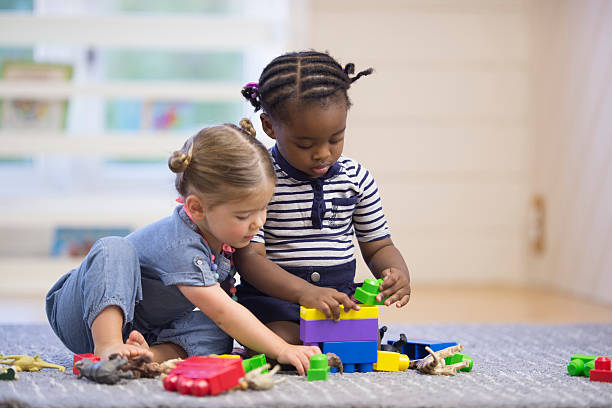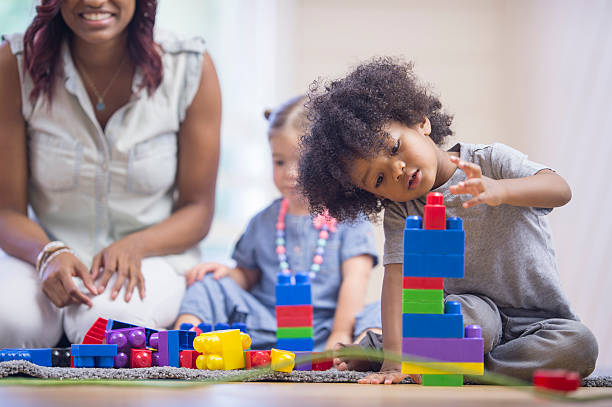Parenthood is a remarkable journey, filled with countless joys, surprises, and, indeed, lessons. While many parents eagerly anticipate milestones such as a child’s first steps or first words, an equally profound developmental milestone is the cultivation of empathy and kindness. These essential virtues form the bedrock of social-emotional learning and shape how children interact with the world.
Empathy and kindness lie at the heart of healthy human relationships. When children learn to care about how others feel and take genuine interest in helping them, they develop essential life skills that extend well beyond the classroom. Consequently, these traits nurture stronger bonds within the family, at school, and throughout the community. Yet, like all virtues, empathy and kindness must be fostered intentionally, especially in the formative years.
In this comprehensive guide, we will explore effective strategies for teaching children empathy and kindness at every developmental stage. Consequently, parents can confidently guide their youngsters toward becoming compassionate, understanding, and socially responsible individuals.

Why Empathy and Kindness Matter
Before hopping into concrete strategies, it is important to understand why empathy and kindness are invaluable. Empathy, the capacity to understand and share the feelings of another, goes hand in hand with kindness, which involves translating empathetic feelings into compassionate actions. Furthermore, these qualities do more than simply help children make friends or get along with siblings. They contribute to:
- Strong Social Bonds: Children who learn empathy and kindness build richer, more meaningful relationships with peers, family, and authority figures.
- Emotional Intelligence: When a child develops empathy, they are also honing other components of emotional intelligence, such as self-awareness, social awareness, and relationship management.
- Conflict Resolution Skills: Empathetic children tend to handle disagreements more effectively. Instead of reacting aggressively, they take a moment to consider how others feel, which leads to peaceful conflict resolution.
- Positive Self-Esteem: Cultivating kindness and empathy can bolster a child’s sense of self-worth, as they are continuously engaged in actions that affirm positive personal values.
- Bullying Prevention: Understanding the feelings of others makes a child far less likely to engage in bullying behaviors. Even more, an empathetic child often becomes an advocate against bullying, thereby promoting a healthier environment.
In essence, nurturing empathy and kindness helps raise children who are not only considerate but also emotionally well-rounded. Consequently, these children are more likely to grow into adults who contribute positively to their communities, workplaces, and global society.
Understanding the Building Blocks of Empathy
Empathy is not a singular trait; instead, it is the sum of various cognitive and emotional skills that develop over time. To effectively promote child empathy, it is helpful to break down these components:
- Emotional Recognition: The child’s ability to identify different emotions, both in themselves and in others.
- Emotional Perspective-Taking: The understanding that someone else’s feelings might differ from their own, often referred to as “putting yourself in someone else’s shoes.”
- Emotional Regulation: The capacity to manage one’s emotions in a way that allows for compassionate responses, rather than reactive ones. (See our article on How to Teach Children Emotional Regulation for an in-depth exploration of this topic.)
- Compassionate Action: The final step, which involves translating empathetic feelings into kind gestures.
Children develop these components at different rates, influenced by their environment, family dynamics, and individual temperament. Therefore, parents who wish to boost kindness in children should employ a variety of strategies that address each component, adapting their approach as the child matures.
Nurturing Empathy and Kindness in Early Childhood (Ages 2–6)
Early childhood is a crucial stage for introducing the foundational concepts of empathy. During these formative years, children are not yet fully capable of understanding complex emotional states; however, they are highly observant and eager to learn. In addition, they absorb information from their immediate environment with remarkable speed.
Thus, raising kind children in this age bracket revolves around simple, consistent, and joyful lessons. Parents should focus on age-appropriate activities like sharing, helping others, and understanding different emotions. Let us examine three targeted strategies below.
Encouraging Sharing and Cooperation
- Explain the Concept of Sharing: Children in this age group often struggle with sharing toys or resources. To help, offer clear explanations: “Sharing your crayons means both you and your friend can color together.” Use simple language and gentle reminders.
- Participate in Cooperative Activities: Games that require two or more people to work toward a common goal can promote a child’s ability to cooperate. For example, building a block tower together encourages teamwork and empathy as each child considers the other’s ideas.
- Praise Specific Behaviors: When children share or help, commend them specifically. Instead of simply saying, “Good job,” you could say, “I love how you shared your puzzle with your sister. That was very kind of you.”
- Read Stories About Sharing: There are many children’s books that focus on sharing and cooperation. For instance, you can read a story where the main character learns to share cookies with friends. Consequently, children see examples of cooperation and empathy in a fun and engaging context.

Helping Children Recognize Emotions
- Use Emotion Flashcards: One practical method is to use flashcards with faces displaying various emotions—happiness, sadness, anger, surprise, and more. Ask your child, “How does this person feel? Why might they feel that way?”
- Mirror Exercises: Encourage children to look in the mirror and mimic different facial expressions. Then, label the emotions: “This is what we look like when we are happy.”
- Name Emotions in Real Time: Whenever a particular emotion arises—such as excitement, disappointment, or frustration—name it: “I see that you are upset because we can’t go to the park today. Let’s talk about it.” Doing so helps the child better understand their emotional states, which is a critical step toward teaching children empathy for others.
- Encourage Emotional Vocabulary: Use words like “frustrated,” “lonely,” or “excited” in everyday conversations. Consequently, children will realize that emotions are normal and can be discussed openly.
Modeling Kindness Through Everyday Actions
- Lead by Example: Children at this stage learn primarily through imitation. If you consistently demonstrate kindness—holding the door open for a neighbor, helping a family member with chores—your child is more likely to internalize these behaviors.
- Give Small Responsibilities: Simple tasks like watering plants or feeding a pet can cultivate a sense of responsibility and caring. When children see themselves as helpers, they are more inclined to show kindness spontaneously.
- Create a Kindness Jar: Each time a child performs a kind act—like assisting a sibling, picking up toys, or offering a hug—let them place a sticker in a jar. Once the jar reaches a certain number of stickers, celebrate with a small reward such as a family movie night. This not only positively reinforces kindness in children but also keeps them motivated to continue.
- Practice Gratitude: Show appreciation for kind acts. For instance, if your child helps set the table, say, “Thank you for helping with the plates. You made dinnertime easier for everyone!” This fosters both gratitude and empathy.
In conclusion, early childhood is the bedrock for establishing social-emotional learning. During this stage, parents should utilise straightforward activities that nurture emotional recognition, sharing, and consistent modeling of kindness.
Video by: Parenting hacks
Cultivating Empathy and Kindness in Middle Childhood (Ages 7–11)
As children transition to middle childhood, their cognitive and emotional capacities expand. They develop the ability to consider more complex scenarios and understand multiple perspectives. Moreover, social interactions become increasingly significant during this time, as friendships take on deeper meaning. Consequently, this period offers a valuable opportunity to reinforce the lessons learned in early childhood while adding more nuanced strategies.
During these years, teaching children empathy moves beyond simple activities like sharing. Instead, it centers on perspective-taking, more advanced conflict resolution techniques, and reinforcing kindness in social circles—particularly with peers.
Perspective-Taking and Active Listening
- Role-Playing Scenarios: Pose hypothetical situations such as, “How would you feel if you were excluded from a game?” This encourages children to think beyond their immediate experiences and place themselves in someone else’s position.
- Active Listening Exercises: Teach children to listen attentively by maintaining eye contact and summarizing what the speaker said. For example, after a sibling shares a story, the child can say, “So you felt sad because nobody asked you to play, right?” Active listening is a crucial component of social-emotional learning and empathy-building.
- Shared Decision-Making: Invite children to participate in household decisions. Whether picking a family movie or planning a weekend outing, encourage them to consider everyone’s preferences and feelings. This approach directly promotes raising kind children, as it gives them experience in valuing diverse viewpoints.
- Discussion of News or Community Events: Many children in this age bracket can understand simple current events. Therefore, discussing age-appropriate news items—like a community service project—helps them develop empathy for broader social issues.
Conflict Resolution Strategies
- Teach the “Stop, Breathe, Talk” Method: When conflicts arise, encourage your child to stop what they are doing, take a deep breath, and then calmly talk about the issue. This simple yet powerful method can be practiced regularly, fostering the habit of resolving disagreements peacefully.
- Identify the Problem and Feelings: Encourage children to articulate not only the problem but also how it makes them feel. For instance, a child might say, “I feel angry because you borrowed my game without asking.” Consequently, this step ensures both children involved in the conflict acknowledge the emotions at play.
- Brainstorm Solutions: Ask each child to propose ways they could solve the problem. Emphasize solutions that consider everyone’s feelings. Indeed, this method helps children practice empathy and fosters collaboration.
- Agree and Implement: Once a solution is chosen, ensure each child commits to it. If it works, praise both parties for resolving the conflict kindly. If not, review and refine the solution. Repetition and consistency are key.
- Encourage Apologies and Forgiveness: Saying “I’m sorry” is vital but must be meaningful. Additionally, explain why the apology is important—“I’m sorry I broke your pencil. I understand you feel upset because you like to keep your things in good condition.” Apologies, followed by genuine amends, reinforce emotional intelligence and conflict resolution skills.
Fostering Peer Support and Community Involvement
- Team Sports and Group Activities: Participating in team sports, scouting organizations, or community clubs enables children to collaborate, encourage one another, and learn about collective responsibility.
- Organize Community Service: Volunteering at local food banks, park cleanups, or animal shelters can broaden a child’s perspective. It teaches them that kindness and empathy extend beyond family and friends, nurturing a sense of social responsibility.
- Encourage Diverse Friendships: Urge your child to make friends with individuals from varied backgrounds or interests. This exposure to diversity can help them appreciate different cultures, personalities, and opinions, which can further bolster child empathy.
- Promote Random Acts of Kindness: Motivate your child to perform small, unexpected acts of kindness. For example, they could write a thank-you note to a teacher or help a neighbor carry groceries. These experiences help children internalize kindness as an everyday norm.
In conclusion, middle childhood is a period where you can build upon the foundational lessons of early childhood. By emphasizing perspective-taking, conflict resolution, and community involvement, parents equip children with deeper levels of empathy and kindness. These skills will, in turn, prove invaluable as children enter the more complex social arena of adolescence.
Fostering Empathy in Adolescence (Ages 12–18)
Adolescence ushers in a host of physical, emotional, and social changes. Teenagers grapple with identity formation, peer pressure, academic responsibilities, and often, the digital world’s complexities. Therefore, teaching children empathy during adolescence requires an adaptive approach that acknowledges teenagers’ growing independence and heightened self-awareness.
On the other hand, adolescence also offers rich opportunities for deeper empathy, as teens can analyze complex moral dilemmas, engage in thoughtful discussions, and assume leadership roles in their communities. Below, we’ll examine three crucial areas: social media, bullying prevention, and social responsibility.
Understanding Social Media’s Impact
- Digital Etiquette and Empathy: The world is more connected than ever before, and adolescents frequently interact online. Highlight the importance of empathetic, respectful communication on social media platforms. Instruct them to consider how their words or posts might affect others, as digital miscommunications can escalate rapidly.
- Recognizing Online Bullying: Teens should know how to identify cyberbullying and understand its consequences. Encourage them to speak up if they or their friends become victims. Consequently, by teaching them to intervene or seek help, you foster a sense of community responsibility.
- Encourage Offline Connections: While social media has its benefits, excessive use can undermine real-world interactions. Encourage your teenager to balance screen time with face-to-face relationships. For instance, instead of texting, suggest they invite a friend over to talk or engage in a shared hobby.
- Model Healthy Online Behavior: Parents should also model respectful and empathetic behavior on their social media. Teens are highly perceptive; they will notice inconsistencies between what parents say and do.
Bullying Prevention and Empathy
- Open Dialogue: Foster an environment where your adolescent feels comfortable discussing both bullying and being bullied. Emphasize that any form of bullying contradicts values of empathy and kindness.
- Active Bystander Training: Encourage teens to be “upstanders” rather than bystanders. If they witness bullying, they can offer support to the victim, document the incident, or notify an authority figure. This principle aligns closely with bullying prevention and underscores the essence of kindness in children.
- Teach the Consequences of Hurtful Actions: Adolescents are capable of grasping the serious impact of bullying. They can comprehend the emotional trauma it can cause, and by understanding these repercussions, they can become more sensitive to how their actions affect others.
- Encourage Empathetic Speech: Teach teenagers how to engage in constructive dialogue instead of hurling insults or resorting to name-calling. Practice phrases like “I can see that you’re upset. Can we talk about what happened?” This approach not only defuses tense situations but also promotes emotional maturity.
Developing Social Responsibility and Ethical Awareness
- Volunteer and Advocacy Work: Adolescents can have a profound impact on their communities. Encourage them to volunteer for causes they care about—climate change, animal rights, social justice, or local charity events. This involvement expands their worldview and fosters a strong sense of empathy.
- Discuss Ethical Dilemmas: Teenagers enjoy debates and intellectual challenges. Present them with ethical dilemmas—from scenarios about plagiarism to environmental stewardship—and encourage them to explore these issues from different perspectives.
- Encourage Leadership Opportunities: Participation in student councils, clubs, or community events can hone conflict resolution skills and promote empathy. Leading a community drive or mentoring younger students allows teens to practice compassionate leadership.
- Self-Reflection: During adolescence, self-reflection is particularly impactful. Urge your teen to keep a journal or discuss their emotions regularly. For instance, encourage them to reflect on a conflict they faced and consider how empathy might have led to a more positive outcome.
In conclusion, adolescence offers an unparalleled platform for teaching children empathy in nuanced and deeply meaningful ways. By guiding teenagers in navigating social media responsibly, preventing bullying, and embracing social responsibility, parents ensure they emerge as compassionate, empathetic, and kind adults.
Real-Life Examples and Anecdotes
Anecdotes can bring abstract concepts to life, thereby reinforcing lessons in empathy and kindness. Here are a few examples:
- Siblings’ Sharing Success: A mother noticed her 4-year-old daughter struggling to share art supplies with her younger brother. After consistent role-playing of sharing scenarios and practicing the “Kindness Jar” idea, the older sibling began offering her crayons voluntarily. In addition, she started helping her brother color, which not only strengthened their bond but also served as a testament to how straightforward, repetitive strategies can lead to genuine empathy.
- School Team Project: In a middle school science project, a teacher grouped students randomly. One child struggled to articulate his ideas in English, his second language. The other group members, guided by the teacher’s lessons on perspective-taking, patiently listened and offered encouragement. They collaborated on a creative project, earning high praise. This positive experience bolstered everyone’s confidence and demonstrated how empathy in group settings can enhance learning outcomes.
- Community Food Drive: A teenager volunteered at a local food bank for his community service requirement. While packing boxes, he conversed with a family who received the donations. Realizing the real-life impact of his volunteer work, he felt compelled to mobilize more classmates for the next drive. This anecdote shows that hands-on experiences with community outreach can ignite strong, empathetic responses in adolescents.
These examples underscore that empathy and kindness do not evolve in isolation. Rather, they flourish when reinforced by family, educators, community leaders, and broader social experiences.
Practical Strategies for Parents: An Action Plan
Below is a comprehensive action plan that parents can adopt and adapt according to their child’s developmental stage. This action plan weaves together crucial aspects of social-emotional learning, emotional intelligence, and concrete steps for raising kind children.
- Open Lines of Communication
- Schedule regular one-on-one conversations with your child. For younger children, these could be short chats at bedtime or while doing an activity. For adolescents, a dedicated “coffee date” or drive-time talk can be more effective.
- Use active listening and ask open-ended questions such as, “How did that make you feel?” or “What do you think about that situation?”
- Build an Emotionally Supportive Environment
- Create a safe space at home where all feelings are acknowledged without judgment.
- Encourage each family member to express emotions respectfully, providing an early introduction to conflict resolution.
- Set Consistent Consequences for Unkind Behavior
- Whether it’s a time-out for a younger child or loss of privileges for a teen, consistency in addressing unkind acts underscores that empathy is a family value.
- However, also offer restorative justice approaches. For instance, if one child damages another’s belongings, a meaningful apology or amends should follow.
- Encourage Cooperative Learning
- Include collaborative games, group chores, or family activities that require teamwork.
- Highlight the importance of teamwork by praising both individual contribution and overall group success.
- Integrate Technology Wisely
- For younger children, limit screen time and choose apps or programs that reinforce positive social messages.
- For teens, discuss ethical online behavior, including digital footprints, the emotional impact of social media, and cyberbullying.
- Promote Reflection
- For children of any age, journaling or drawing can be a valuable reflection tool. This is especially beneficial for children who find it challenging to express themselves verbally.
- Encourage adolescents to think critically about their actions, perhaps even keeping a gratitude journal or an “empathy log” that records acts of kindness they perform or witness.
- Celebrate Kindness
- Take note of acts of kindness and empathy—big or small—and celebrate them. This could be through verbal praise, a star chart, or even a family “Kindness Award” handed out weekly.
- Use Media for Positive Reinforcement
- Watch movies, read stories, or play games that showcase empathy and kindness. Subsequently, discuss these themes with your child.
- For older children, documentaries or news stories covering global issues can prompt discussions on social responsibility and compassion.
- Model the Behavior You Want to See
- Remember that children of all ages learn from observing the adults around them. Therefore, make sure your words, actions, and even online behavior reflect empathy and kindness.
- Show respect for your child’s feelings, apologize if you lose your temper, and offer to make amends if you inadvertently hurt their feelings.
- Connect Through Community Initiatives
- Families can volunteer together at local shelters, community gardens, or nursing homes. This fosters a collective sense of purpose and underlines the real-world significance of empathy.
- Encourage older children to take up leadership roles in community projects, reinforcing social responsibility and empathy.
This action plan serves as a structured approach to integrate empathy lessons into daily life. By combining consistent communication, reflective exercises, technology awareness, and community involvement, you set the stage for children to grow into empathetic adults.
How to Teach Children Emotional Regulation
To further support your journey in teaching children empathy and kindness, it is crucial to help them develop strong emotional regulation skills. When children can manage their own emotions effectively, they are better able to acknowledge and respond to the emotions of others. For more in-depth strategies on helping your child build emotional control, be sure to check out our internal resource:
How to Teach Children Emotional Regulation
In that article, you will discover practical methods such as:
- Breathing exercises to calm heightened emotions.
- Identifying emotional triggers and managing stress.
- Building mindful routines for daily life.
By combining the insights from this guide on empathy and kindness with effective emotional regulation techniques, you will be well-prepared to raise a confident, compassionate individual.
Conclusion
Empathy and kindness form the cornerstone of a healthy, vibrant community—starting with our children. As we have seen, child empathy and kindness in children can be nurtured through consistent strategies tailored to each developmental stage:
- Early Childhood (Ages 2–6): Reinforcing sharing, helping, and identifying emotions.
- Middle Childhood (Ages 7–11): Strengthening perspective-taking, conflict resolution, and fostering meaningful social connections.
- Adolescence (Ages 12–18): Encouraging responsible use of social media, active bullying prevention, and heightened social responsibility.
Furthermore, empathy is not a one-dimensional skill. It involves recognising emotional states in oneself and others, effectively regulating emotional responses, and translating caring thoughts into compassionate actions. This skill set not only helps children build strong relationships but also enables them to grow into caring, socially responsible adults.
In today’s interconnected world, empathy and kindness serve as powerful antidotes to rising polarization, bullying, and insensitivity. Moreover, these traits create ripple effects: a single kind act can lead to many more, transforming families, schools, and entire communities. By equipping children with empathy, we are not only improving their immediate relationships but also creating a more compassionate future for everyone.






